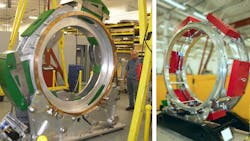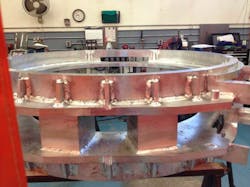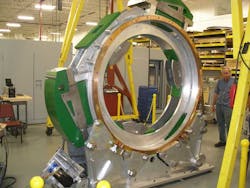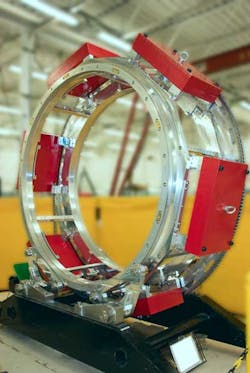Redesign of Medical Imager Gantry Cuts Costs, Eases Installation
A medical company had been making and marketing a multi-million-dollar cancer imaging and treatment system, the company’s flagship device, for a few years. Management then decided to upgrade portions of the technology in the device, not the least of which was changing the dosing subsystem. The original model, the one they had been selling, relied on cobalt for dosing.
The company wanted to move to linear accelerators, sometimes known as linacs. It also wanted to lower the cost of making the imager. But such a major redesign would make it mandatory to requalify the machine, and requalification is a long and arduous process. Nevertheless, it would open a window to some interesting possibilities.
When the company first designed the machine, it had partnered with an engineering team from PEKO, a contract design and manufacturing firm. PEKO manufactured the machine the OEM had designed. While the machine was being qualified, PEKO engineers brainstormed some Design for Manufacturability and Assembly (DFMA) ideas for it. Implementing them at the time of the original design would require a new requalification which could take over a year and cost tens of thousands of dollars. The company was anxious to get the machine on the market, so the DFMA ideas were shelved.
Since the upgrade would require requalification anyway, the two companies decided to apply DFM principles to the device and lower the cost of making it at the same time.
One of the machine’s main assemblies is a gantry, a large donut-shaped ring into which the patient is placed, much like an MRI machine. Changing the dosing subsystem would affect the gantry the most, so the DFMA principles of “eliminate, combine and optimize” were applied to its redesign.
The gantry, an electro-mechanical assembly, stands roughly nine feet tall and is composed of large aluminum components, all on a heavy base. The aluminum sections are joined to strengthen the gantry. A chain drive rotates the gantry when the machine is operating. The gantry’s main function is to position and hold the imaging and dosing subsystems that are paramount to proper treatment.
The original gantry was assembled using heavy ¾-in. welds joining the aluminum components. It took 100 hours to weld, but the aluminum parts had to be heated to 300°F during this process. This type of welding presents several challenges. It is prone to warp and shrink parts in unpredictable directions, which can push parts out of tolerance and lead to low yield rates and repeatability problems.
Another issue is the high cost of welding thick beads on large structures followed by post machining. Lastly, inspection time was lengthy due to the manufacturing method and the size of the components. The original design was also more likely to be rejected during inspection of the entire unit, and at that point the gantry could not be dissembled to make easy corrections.
New Calculations for Old Issues
The DFMA redesign used bolts rather than welds to assemble the gantry. This would maintain the gantry’s strength and durability while reducing assembly and inspection times and increasing manufacturing throughput. Using bolts also slashed the amount of time parts spent on large CNC machining centers, a costly and unwieldy machining method.
As in any DFMA initiative, results are what matters most. Once the work is performed, measuring the outputs against the expectations reveals success or failure. In this case, PEKO used DFMA to lower the overall unit cost and increase manufacturing capacity and throughput by eliminating welding and large machining. The redesign saved thousands of dollars and removed process uncertainty from this gantry project. The time needed on large mills was reduced by 50%. Across the board, the gantry’s price was reduced by nearly 22% and throughput rose to more than double that of the original gantry.
Scott Baxter is BD manager at PEKO Precision Products in Rochester, N.Y.
About the Author
Scott Baxter
BD manager, PEKO Precision Products
Scott Baxter is BD manager at PEKO Precision Products in Rochester, N.Y.




